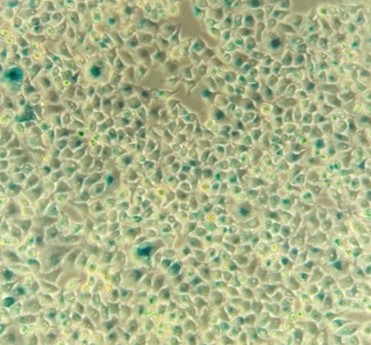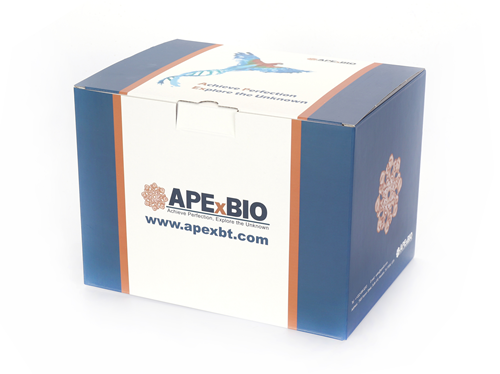Lysosomal β-Galactosidase Staining Kit
Lysosomal β-Galactosidase Staining Kit is a kit for the detection of lysosomal acidic β-galactosidase in cell or tissue sections using X-gal as substrate, which is often used as a control for cell senescence detection. High levels of lysosomal acidic β-galactosidase can be detected in most normal cells, while β-galactosidase, which is specific for cellular senescence, is only expressed during senescence, so this kit can be used as a control stain for senescent β-galactosidase. The X-gal provided in this kit can produce a blue product catalyzed by lysosomal acidic β-galactosidase, and the expression of lysosomal acidic β-galactosidase can be detected by microscopy.
This kit is only used for staining lysosomal acidic β-galactosidase, and cannot stain senescence-specific β-galactosidase or exogenously transferred E. coli β-galactosidase. This kit is optimized to be compatible with polystyrene consumables or containers such as common cell culture plates, pipettes, etc., which can effectively avoid poor staining results caused by incompatible consumables or containers. In addition, the working solution prepared by this kit cannot produce precipitation during use, which is more convenient.

Figure 1: Staining of lysosomes in HeLa cells with this kit
|
Components |
K2181-100 T |
|
Fixative Solution |
100 mL |
|
X-gal Solution |
5 mL |
|
Staining Solution A |
1 mL |
|
Staining Solution B |
1 mL |
|
Staining Solution C |
100 mL |
|
Store the kit at -20°C, stable for 1 year. X-gal Solution should be stored at -20°C away from light. |
|








